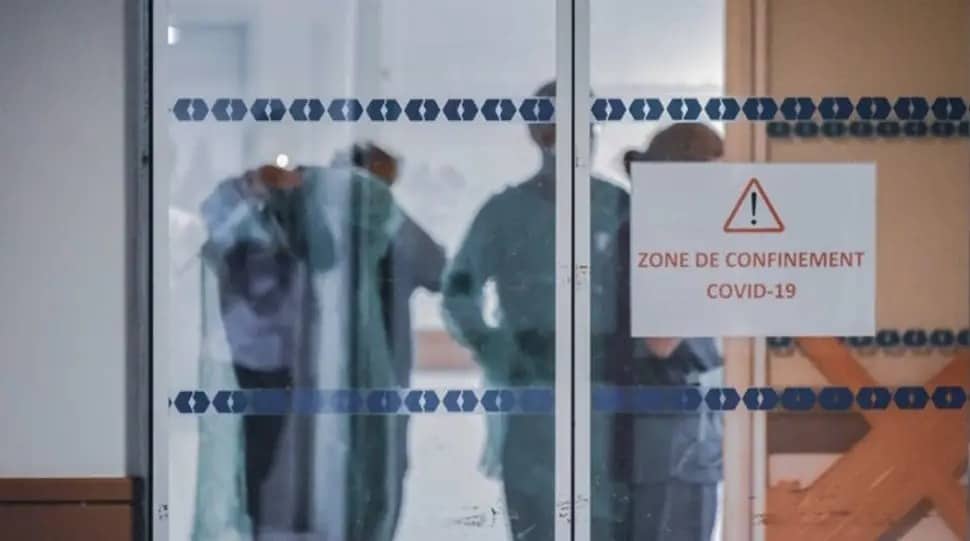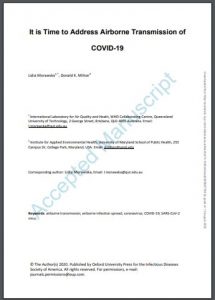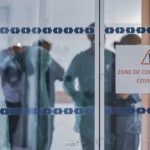As a reply to an open letter from more than 200 scientists, the World Health Organization (WHO) has recognized that new evidence confirms the potential for airborne transmission of the novel coronavirus. A crucial aspect to be taken into account in hospital hygiene measures and crowded indoor spaces.
“We recognize that evidence is emerging in this area, as in other areas regarding the COVID-19 virus and the pandemic. Therefore, we need to be open to this possibility and understand its implications for the mode of transmission and the precautions that need to be taken, ”explained Benedetta Allegranzi, WHO technical officer for infection prevention and control, on 7 July, during a press videoconference.
Airborne transmission by droplets
 In a scientific note, an updated version of the one published on March 29, WHO sets out the different possible modes of transmission for SARS-CoV-2: by contact, through droplets, and by air, but also by contaminated objects or surfaces, by urine and feces, by blood, from mother to child and from animal to man.
In a scientific note, an updated version of the one published on March 29, WHO sets out the different possible modes of transmission for SARS-CoV-2: by contact, through droplets, and by air, but also by contaminated objects or surfaces, by urine and feces, by blood, from mother to child and from animal to man.
What is the role of A/C in the virus transmission?
The role that air conditioning may play in the airborne transmission of coronavirus is under investigation. Regular air conditioning systems recirculate air, especially when it’s hot outside. When outdoor temperature is extreme, indoor air recirculates more, leading people inside to breath a higher percentage of the same air that is exhaled. Also, the fan components of air conditioners can give coronavirus aerosol extra lift to stay suspended in the air longer.
How to fight COVID-19 virus spread?
In protected environments, it is not enough to disinfect surfaces and materials. Due to its mobility, air is also responsible for the propagation of microorganisms, becoming also a vector of contamination, according to French standard NF S 90135. Air treatment is necessary in hospital hygiene to fight against the spread of infections.
How can ATA help ?
The virus SARS-COV2, causing the respiratory disease Covid-19, is part of the Coronaviridae family, made up of a lipid membrane of cellular origin. We tested our F7 + H14 filtration chain and photocatalysis decontamination technologies, and Bioxygen® module on the H1N1 Influenza virus, from the lipid membrane category, like that of coronaviridae, we obtained 99.9929{01e3c5e93231d16e008ef94f2b1d6fd0127ff363a7cc717001d1444d838f865e} retention (Virnext test report result: ATA20140305E5 Lyon, 03/05/14)
Conclusion after study: The “Room Dopair / Dopair” system developed by the company ATA-Medical makes it possible to decontaminate a confined space of 2.5 m3 in 5 minutes associated with efficiencies of 99.9929{01e3c5e93231d16e008ef94f2b1d6fd0127ff363a7cc717001d1444d838f865e} and 99.905{01e3c5e93231d16e008ef94f2b1d6fd0127ff363a7cc717001d1444d838f865e} respectively for the categories of viruses with lipid membranes such as coronaviridae, and without membranes such as Adenovirus type 5, respectively. The “Room Dopair / Dopair” system therefore makes it possible to decontaminate the air in a confined space containing viruses such as COVID-19.
The complete test result is available on request, contact us here




